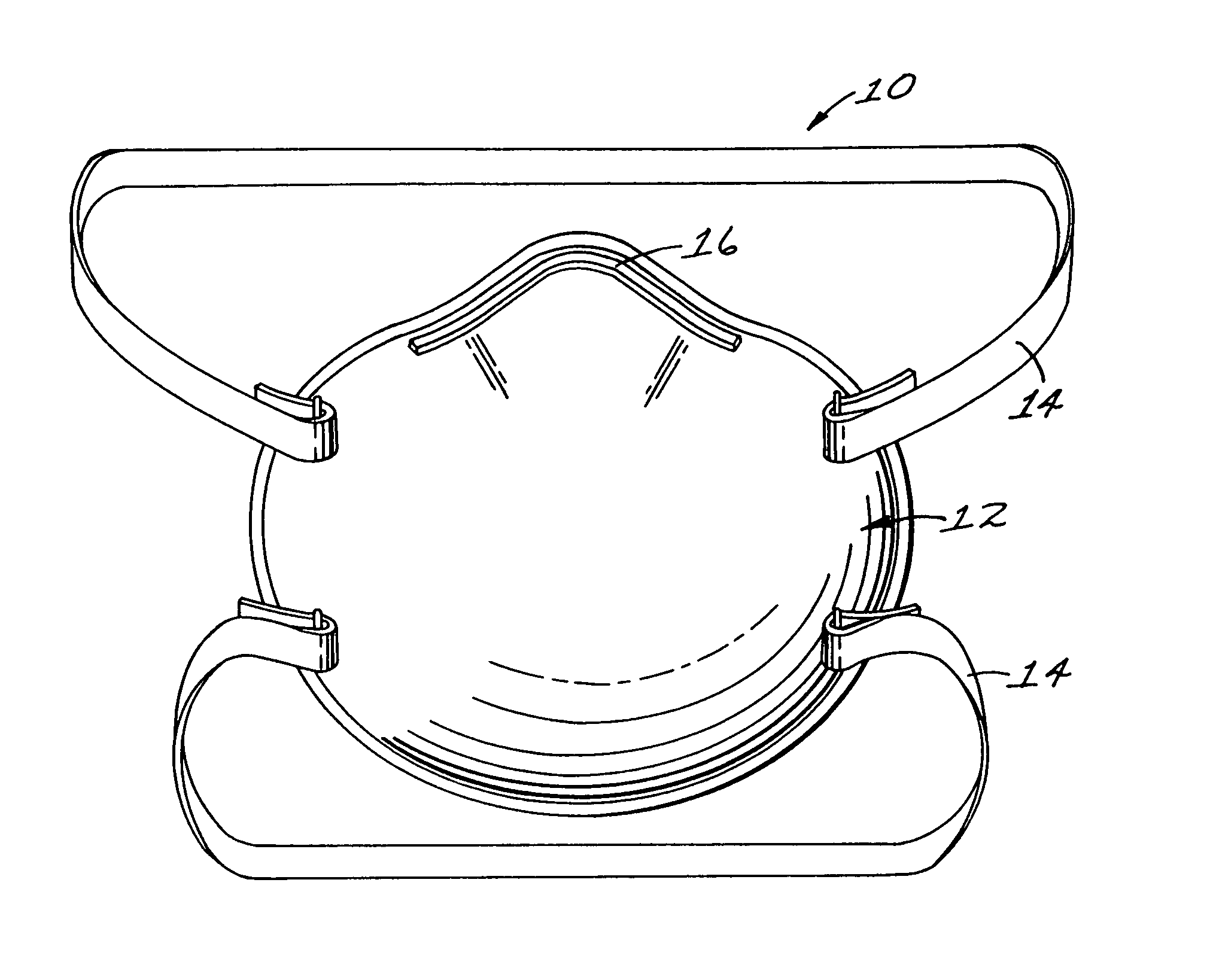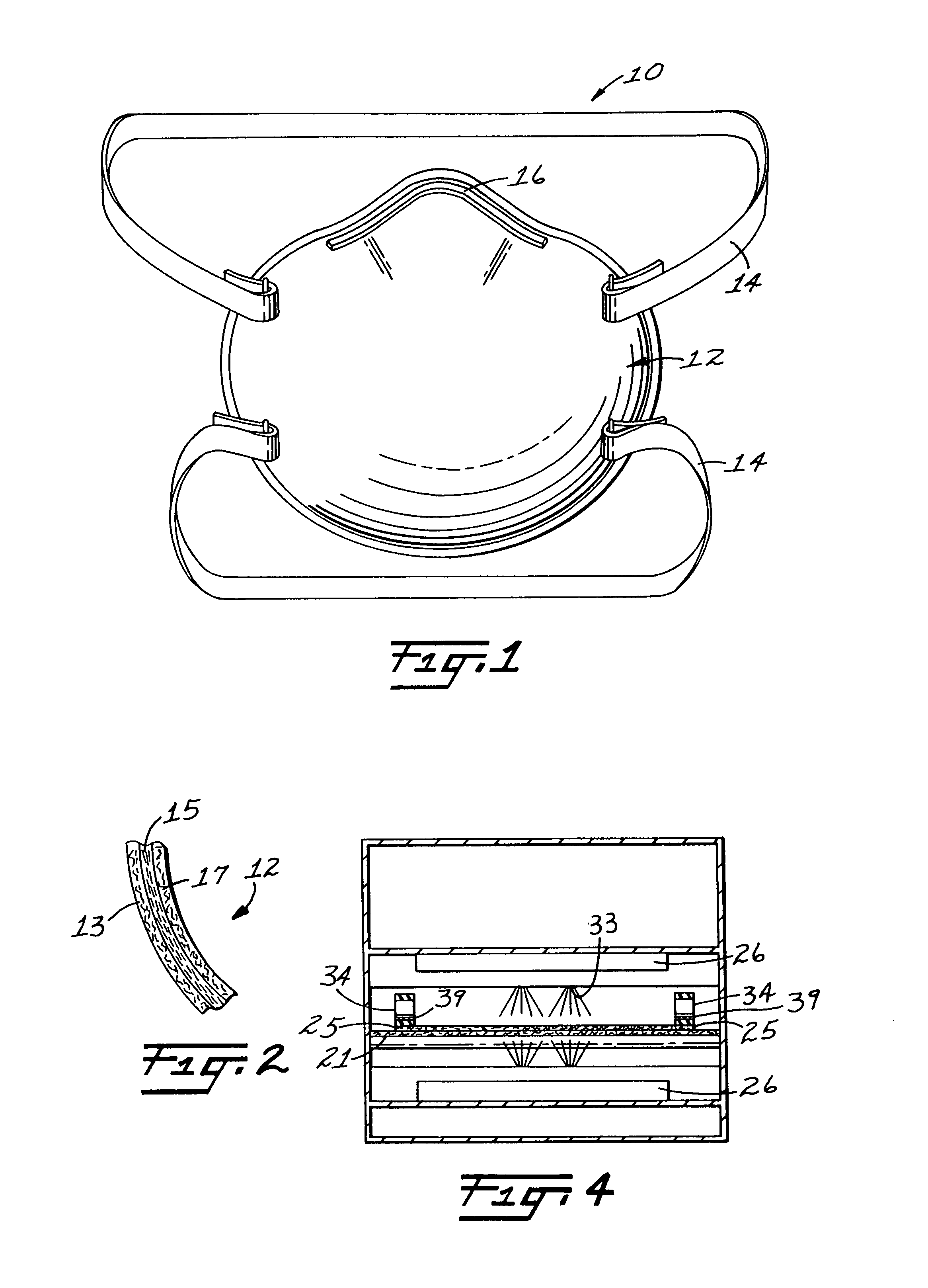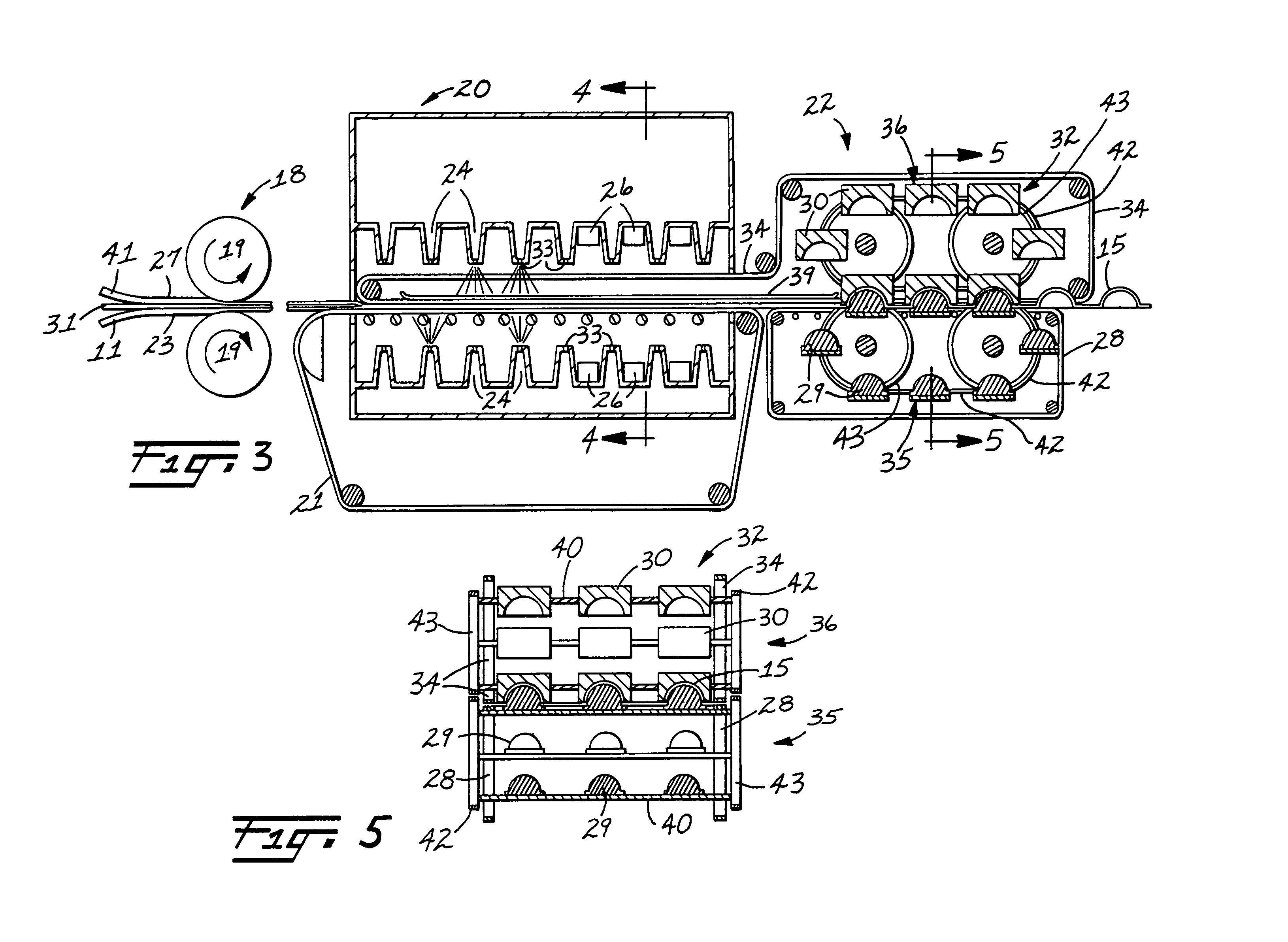Fibrous filtration face mask
a technology of fibrosis and face mask, applied in the direction of filtration separation, separation process, application, etc., can solve the problems of generating excess quantities of fiber waste, causing fiber to fall into the open area, and causing fiber to be loosened, so as to improve the effect of surface fuzz, and reduce the creation of surface fuzz
- Summary
- Abstract
- Description
- Claims
- Application Information
AI Technical Summary
Benefits of technology
Problems solved by technology
Method used
Image
Examples
examples
[0052]In the following examples, cup-shaped shaping layers were formed using cold and hot molding techniques and various fiber blends. The shaping layers were tested for surface fuzz after being subjected to abrasion, and the results of those tests are tabulated in Table 1. In FIG. 5, a comparison of surface fuzz values for cold and hot molded fibrous shells is illustrated. The data plotted in FIG. 5 is for shells consisting of bicomponent and binder fibers. Line 37 indicates surface fuzz values for hot molded shells, and line 38 indicates surface fuzz values for cold molded shells.
examples 1 – 20
Examples 1–20
[0053]In these examples, non-woven fibrous webs were cold molded. The molded non-woven webs contained bicomponent fibers that had a PET core surrounded by a sheath of a copolyester blend. In some of the examples, the fibrous web was preskinned. In other examples, there was no preskinning step. Examples 1–20 demonstrate that surface fuzz creation is reduced with preskinning and increasing bicomponent fiber content. The examples also demonstrate that surface fuzz creation is further reduced with increasing preskinning temperatures. In all of these examples, the molded fibers did not stick to the molds.
example 1 (
No Preskinning)
[0054]A non-woven fibrous web composed of 100 percent bicomponent MELTY Type 4080 fibers formed in a RANDO WEBBER air-laying machine was molded into shaping layers. The web was heated to a temperature of approximately 190° C. by simultaneously applying hot air and infra-red heat to the web. Hot air impinged upon the top of the web and IR heat was applied to the top and bottom of the web. After heating, the hot web was molded by placing it between cup-shaped unheated male and female molds. Four shells were randomly selected and were then tested for surface fuzz. These shells had a calculated average fuzz value of 9.5
Surface Fuzz Abrasion Test
[0055]The fuzz values were determined as follows:
[0056]Each molded shell was placed on a cup-shaped mandrel and was subjected to abrasion by dragging a stiff, flat brush over a surface of the face mask from the base of one side to the base of an opposing side. A total force of approximately 1.3 Newtons was exerted by the brush on e...
PUM
| Property | Measurement | Unit |
|---|---|---|
| Fraction | aaaaa | aaaaa |
| Percent by mass | aaaaa | aaaaa |
| Percent by mass | aaaaa | aaaaa |
Abstract
Description
Claims
Application Information
 Login to View More
Login to View More - R&D
- Intellectual Property
- Life Sciences
- Materials
- Tech Scout
- Unparalleled Data Quality
- Higher Quality Content
- 60% Fewer Hallucinations
Browse by: Latest US Patents, China's latest patents, Technical Efficacy Thesaurus, Application Domain, Technology Topic, Popular Technical Reports.
© 2025 PatSnap. All rights reserved.Legal|Privacy policy|Modern Slavery Act Transparency Statement|Sitemap|About US| Contact US: help@patsnap.com



